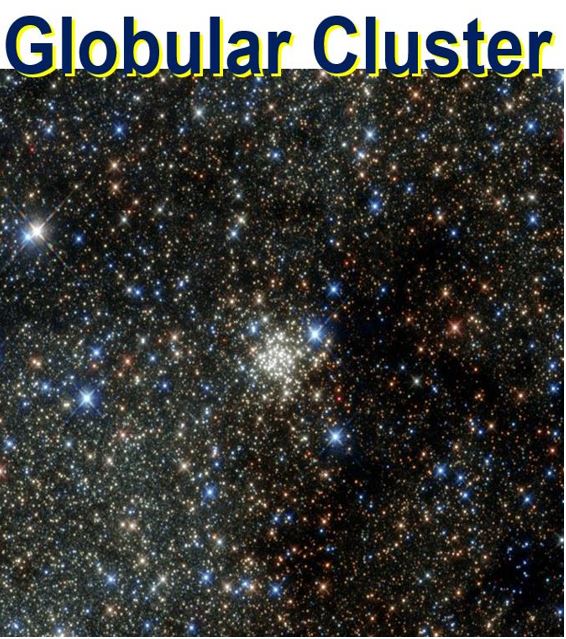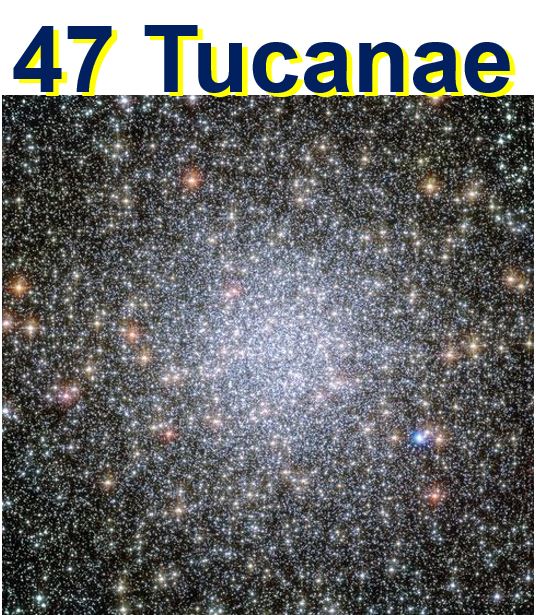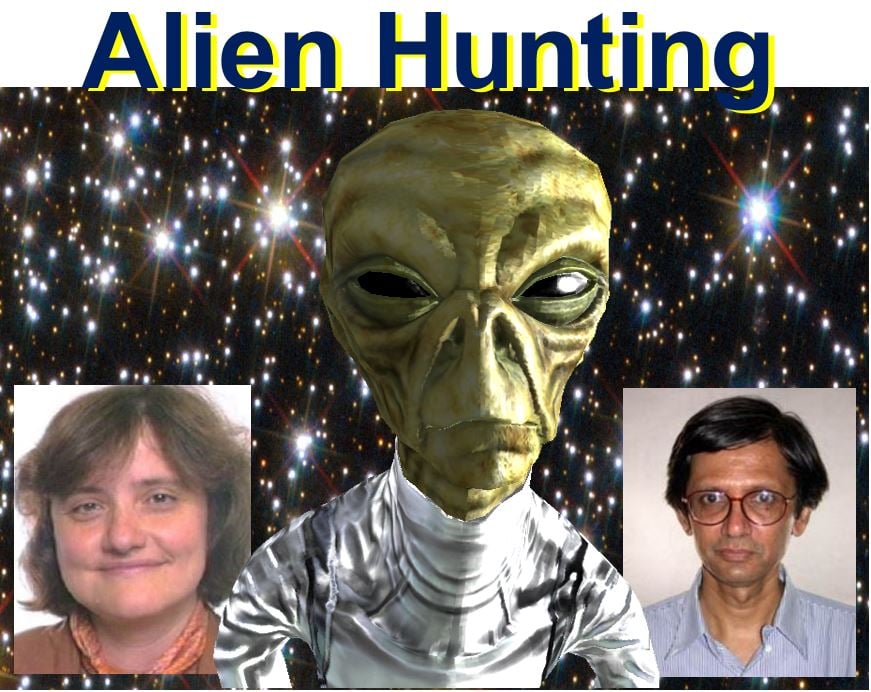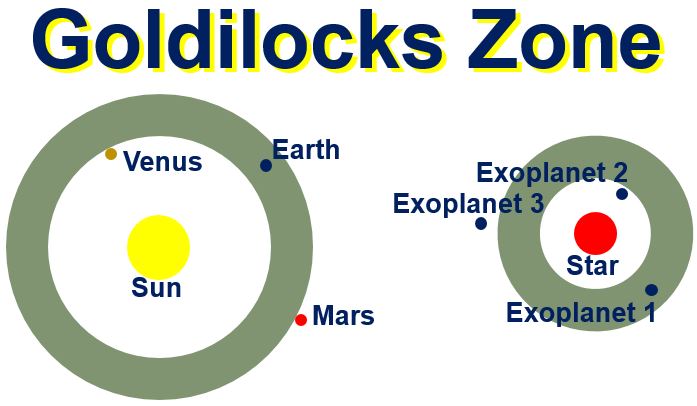If aliens do exist, they are more likely to live in a globular cluster, says Dr. Rosanne Di Stefano, who works at the Harvard-Smithsonian Center for Astrophysics at Cambridge in the United States.
Dr. Di Stefano, a lecturer on Extrasolar Planets and Observational Cosmology, believes these dense spheres of ancient stars are likely to be the best places to look for advanced extraterrestrial civilisations.
Globular clusters are spherically-shaped clusters of stars that are extremely dense towards their cores. They are typically composed of hundreds of thousands of ancient stars. Some clusters in our Milky Way are massive, with several million times the mass of our Sun.
 A Hubble Space Telescope image of the Arches Cluster, the densest known star cluster in the Milky Way, located about 25,000 light-years from Earth in the constellation Sagittarius. Dr. Di Stefano says we should target our searches on globular clusters in our quest to discover alien civilisations. (Image: nasa.gov)
A Hubble Space Telescope image of the Arches Cluster, the densest known star cluster in the Milky Way, located about 25,000 light-years from Earth in the constellation Sagittarius. Dr. Di Stefano says we should target our searches on globular clusters in our quest to discover alien civilisations. (Image: nasa.gov)
Globular clusters favour alien likelihood for many reasons
Dr. Di Stefano says there are several reasons for favouring these clusters when looking for alien life. One is their age – globular cluster’s stars are estimated to be at least 10 billion years old, which means their stellar systems have had plenty of time for life to have formed and then evolved to an advanced level.
Because stars are densely-packed in these clusters, they are very near each other, which means that stellar travel would be easier. Stellar travel means travelling from one solar system to another.
Stars could be just one twelfth of a light-year apart in globular clusters. Our solar system’s closest star is 4.2 light years away.
Writing at the Sky At Night magazine, a BBC publication, Dr. Di Stefano said:
“It would also be easier for a civilisation to explore and even set up outposts on other worlds.”
 Globular clusters like the one above – 47 Tucanae – might be ideal places to search for advanced alien civilisations. Their crowded environment means intelligent extraterrestrial life could more easily send probes to neighboring stars. (Image: cfa.harvard.edu. Credit: NASA, ESA, and the Hubble Heritage Team)
Globular clusters like the one above – 47 Tucanae – might be ideal places to search for advanced alien civilisations. Their crowded environment means intelligent extraterrestrial life could more easily send probes to neighboring stars. (Image: cfa.harvard.edu. Credit: NASA, ESA, and the Hubble Heritage Team)
Dr. Di Stefano also mentioned globular clusters as the best places to look for aliens during a presentation in Florida in January at the 227th Meeting of the American Astronomical Society.
Just one exoplanet detected so far
Even though we know that globular clusters, as they are full of stars, must also have lots of planets, we have only discovered one exoplanet in one of them so far – called PSR B1620-26 b in the M4 cluster located within the constellation Scorpius.
PSR B1620-26 b, nicknamed Methuselah, orbits a binary system consisting of a white dwarf and a pulsar. A white dwarf is a very small, dense star that is typically the size of a planet, while a pulsar is a celestial object (believed to be a rapidly-rotating neutron star) that emits regular pulses of radio waves and other electromagnetic radiation at very fast rates – up to 1,000 pulses per second.
Methuselah is about 12.7 billion years old, making it the oldest exoplanet we know of. An exoplanet is a planet outside our Solar System.
Dr. Di Stefano said it would be strange if there were not several other exoplanets inside globular clusters.
Dr. Di Stefano wrote:
“Of course, this is all conjecture. We don’t know whether there is alien life in such clusters. But globular clusters would be a good place to look and might be the first place where intelligent life is identified in our galaxy.”
 Humans have been evolving on Earth for a couple of million years. Imaging how advanced and intelligent an alien civilisation would be if it had been evolving for over 1 billion years. (Image: terminally-incoherent.com)
Humans have been evolving on Earth for a couple of million years. Imaging how advanced and intelligent an alien civilisation would be if it had been evolving for over 1 billion years. (Image: terminally-incoherent.com)
Could proximity undermine planetary systems?
There is one factor which might undermine the evolution of life in globular clusters. As the stars and celestial bodies are very close to one another, they are more likely to disrupt each other’s planetary systems.
According to research carried out by Dr. Di Stefano, this kind of danger does no exist.
Dr. Di Stefano wrote:
“What we’ve found is the opposite – that it’s possible for many habitable-zone planets to survive for billions of years.”
Many globular clusters in the Milky Way
Astronomers say there are over 150 globular clusters in the Milky Way – our galaxy. The majority of them are in the outer edges of our galaxy and were formed over 10 billion years ago.
 Dr. Di Stefano (left) says globular clusters are the best places to look for aliens. Prof. Alak Ray (right) believes that globular clusters are likely to have many exoplanets, even though we have only discovered one so far. (Images: Dr. Di Stefano harvard.edu. Prof. Ray tifr.res.in.)
Dr. Di Stefano (left) says globular clusters are the best places to look for aliens. Prof. Alak Ray (right) believes that globular clusters are likely to have many exoplanets, even though we have only discovered one so far. (Images: Dr. Di Stefano harvard.edu. Prof. Ray tifr.res.in.)
Because they are so old, their stars contain fewer of the heavy elements needed for making planets, since those elements – iron and silicon – must be created in earlier generations of stars.
Several scientists argue that this reduces the likelihood of planets orbiting stars within globular clusters, and that is why we have only found one exoplanet within them so far.
Dr. Di Stefano and colleague Prof. Alak Ray, from the Tata Institute of Fundamental Research in Mumbai, India, believe this view it too pessimistic.
We have detected exoplanets around stars that have just one-tenth of the heavy metal concentrations found in our Sun.
 The older, cooler stars in the globular clusters will have a closer Goldilocks Zone (Habitable Zone) than the one in our Solar System, which means they will be relatively safe from the pull of nearby stars.
The older, cooler stars in the globular clusters will have a closer Goldilocks Zone (Habitable Zone) than the one in our Solar System, which means they will be relatively safe from the pull of nearby stars.
While the larger planets like Jupiter tend to prefer to orbit stars with higher concentrations of heavy elements, smaller Earth-sized planets show no such preference, studies have shown.
Regarding the likelihood of exoplanets existing within globular clusters, Prof. Ray said: “It’s premature to say there are no planets in globular clusters.”
Cooler stars’ Habitable Zones are closer
Older stars, like the ones in globular cluster, are cooler than their younger counterparts. This means that their Habitable Zones, also called Goldilocks Zones, are closer.
A planetary system’s Goldilocks Zone is the distance from the star where life as we know it could exist, because conditions are ‘just right’. In the Goldilocks Zone, the temperature is ideal for liquid water to exist, plus the right amount of sunlight hitting the planet’s surface.
So, if exoplanets within the Goldilocks Zone will be closer to their stars in globular clusters, it does not matter that the stars are very close to each other, i.e. those planets would be relatively safe from the gravitational pull of nearby stars.
Globular cluster habitable planets probably very old
Dr. DiStefano explained:
“Once planets form, they can survive for long periods of time, even longer than the current age of the universe.”
As mentioned before, if habitable planets in globular clusters have been around for many billions of years, there would have been plenty of time for life to evolve into super-advanced civilizations.
Scientists estimate that life on Earth began about 3.8 billion years ago. Imagine a very old planet in a globular cluster where life began more than 7 billion years ago. Perhaps its most intelligent life form had over 1 billion years to evolve, compared to humans who have only been around for a couple of million years.
Any civilization that has been evolving for over a billion years would literally be light-years ahead of us technologically – they would also probably be far more intelligent.
Globular clusters are far away from us
Global clusters are extremely far away from Earth – the closest one is many thousands of light years from here. This makes it very difficult for us to detect exoplanets, especially in the crowded core of a cluster.
Detecting transiting exoplanets on the outskirts of globular clusters would be much easier, says Dr. Di Stefano.
See our web page with more than seventy articles about aliens and UFOs.
Video – Search in globular clusters for alien life
